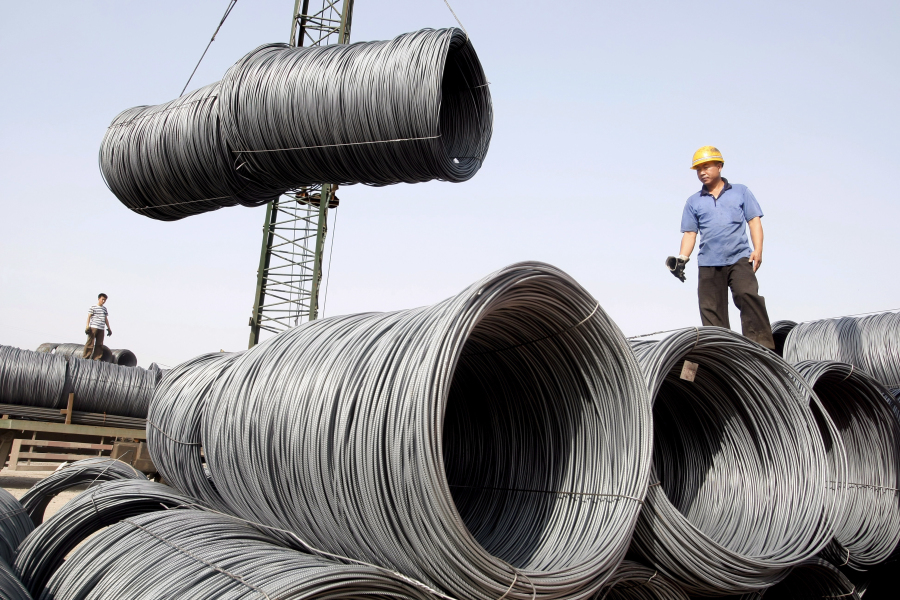 By Anthony Lawry
By Anthony Lawry
Figures pertaining to the People's Republic of China (PRC) have maintained a relatively consistent forecast with gross domestic product (GDP) growth figures which continue to hover around 6.7 percent. These numbers have not been downgraded to lower figures by PRC economists. However, according to economists at the Organization for Economic Cooperation and Development (OECD), economic data compiled in November has indicated a furthering of slowdown despite continued monetary stimulus. Their figures indicate that by 2018, China's GDP will slow down to 6.1 percent. Their economists suggest this is the result of four main factors that are continuing to put negative pressure on China's economy. With economic data compiled from the month of November, these economists see the continuation of rising debt, lower industrial output, continued loss of private investment and overleveraging of state owned enterprises (SOEs).
Let us begin with the lower industrial output. Although economists forecasted that industrial output for November would rise in October from 6.1% in September to 6.2%, it did not do so. This is likely to be the case when November's numbers come out as well. In other words, industrial output is at a stagnant 6.1 percent and off from a 2016 high of 6.8 percent in March. Some have even predicted that industrial output will be as low as 5.9 percent. However, an aggregate look by most economists suggests that this negative picture will not be the case. Although manufacturing output has grown at a hopeful 6.7 percent in addition to a promising 7.9 percent growth in electricity, gas and water production, mining output fell to 2.2 percent indicating the commodity bust. Overcapacity is still a huge problem that needs to be addressed.
Because of these problems, many foreign investors have pulled their money out of China. Although fixed asset investment grew from January 2016 to October 2016 in comparison to investment between January 2015 and October 2015, the levels of foreign direct investment (FDI) in November of this year are still not greatly inspiring. It is true that Hong Kong remains a big receiver in FDI, but these figures take into account investments from companies in mainland China. In other words, Hong Kong FDI is more a matter of domestic spending than international investments. Additionally, many Chinese companies that had invested domestically have been taking their money out of Chinese market for almost a year. These figures continued in November as capital flight remained an issue. Because of this, the government has issued tight controls in November on Chinese companies investing overseas in order to prevent further capital flight.
 To prevent further decay of China's economy, the government has issued large stimulus packages over the past few years to bolster growth. Those figures continued to rise significantly in November across the board in government, household and non-financial corporate debt as a percentage of GDP. In the third quarter of this year, household debt rose to 67 percent of all debt issued. While this is a high number, there is not enough evidence to indicate the impact of rising debt on the economy as it may actually contribute to spending and, in turn, growth. As for SOEs, November really saw a continuation of previous trends within the government's companies. The China Daily reported that profits for SOEs rose by nearly $200 billion from January to November of this year, yet this data conflicts with non-Chinese figures that suggest that profits remained stagnant.
To prevent further decay of China's economy, the government has issued large stimulus packages over the past few years to bolster growth. Those figures continued to rise significantly in November across the board in government, household and non-financial corporate debt as a percentage of GDP. In the third quarter of this year, household debt rose to 67 percent of all debt issued. While this is a high number, there is not enough evidence to indicate the impact of rising debt on the economy as it may actually contribute to spending and, in turn, growth. As for SOEs, November really saw a continuation of previous trends within the government's companies. The China Daily reported that profits for SOEs rose by nearly $200 billion from January to November of this year, yet this data conflicts with non-Chinese figures that suggest that profits remained stagnant.
Overall, we are still witnessing a precarious moment for China's economy. November's data points further suggest that China's economy is unfortunately slowing down with problems stemming from debt, lower industrial growth and an overall global macroeconomic environment that is still not conducive for the rapid economic expansion that has been seen over the past few decades. November figures, while not truly impressive, do further indicate that China is in the process of a soft landing, the idea that although the economy is slowing it is not crashing. This is an important development for an economy that is in transition from export-based to consumption-based.
But November also saw dramatic decrease in the strength of the Chinese Remnimbi (RMB). Although this is great news for exporters since it lowers the cost of labor, it is terrible news for the Chinese consumer who will, theoretically, see higher prices for consumption goods. In spite of this, the weakening of RMB is almost certainly not the result of currency manipulation. In fact, the weakening of RMB is an extremely positive signal of the fact that the government is letting market forces strongly impact the value of the currency. This is regardless of how hard the government is trying to steer the economy away from export-driven growth. In spite of this, sometimes market forces are not greatly conducive for monthly growth or consumption figures, but overall this is a great signal for the general direction of Chinese economy.
These positive trends may not fully metastasize in the monthly economic data in the near term or the foreseeable future, but they will eventually come to fruition within monthly numbers. In short, Chinese data is still weak, but there are positive signs as well.
--- END ---